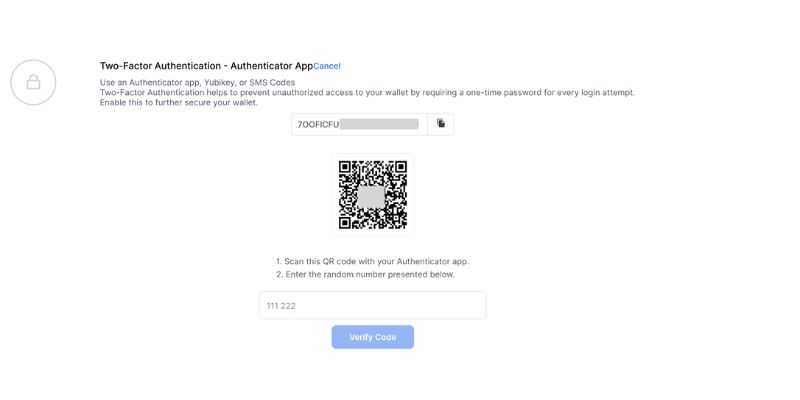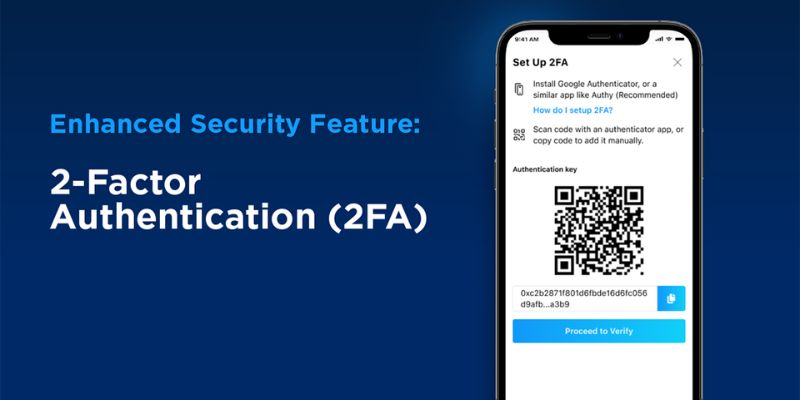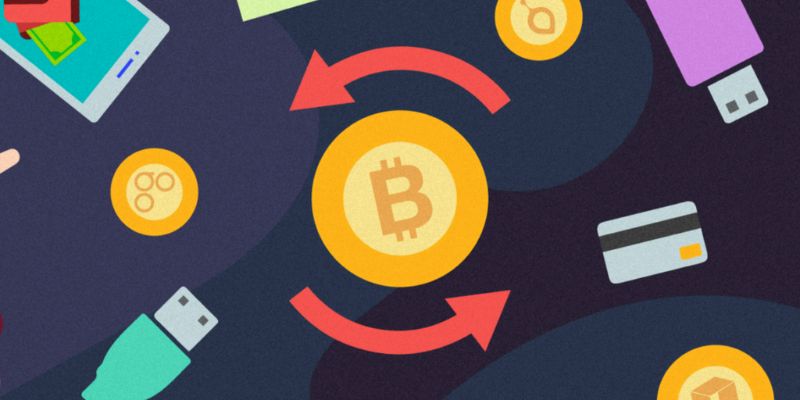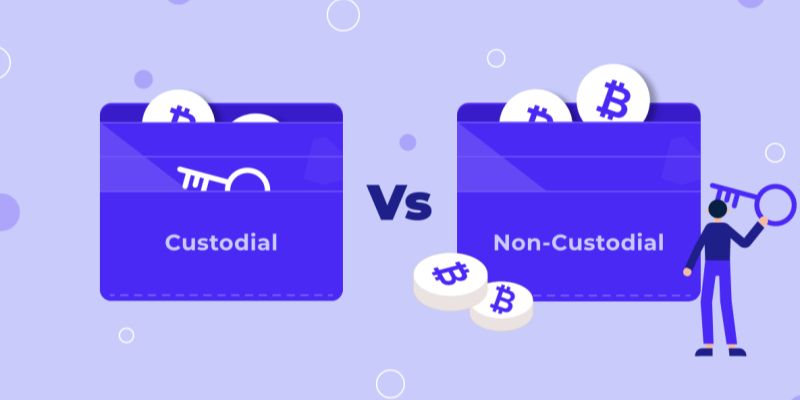Enable 2FA on your crypto wallet and say goodbye to sleepless nights worrying about security breaches. Understanding the nuts and bolts of Two-Factor Authentication is the armor you need in the wild west of digital currency. Let’s dive in together and walk through why layering up with 2FA isn’t just smart, but vital for your crypto wallet’s defense. Armed with this guide, you’re set to give your wallet that ultimate security boost it desperately needs. Buckle up, it’s time to take control and safeguard your digital gold from the hackers lurking in the shadows.
Understanding the Importance of 2FA for Your Crypto Wallet
Exploring Two-Factor Authentication Crypto Guide
You keep your home safe with a lock, right? Think of 2FA kind of like that, but for your digital coins. It’s a way to double-check that the person getting into your crypto wallet is you. I’ll show you why this matters a lot and how it keeps your stash secure.
When you just use a password, someone who guesses it can get into your wallet. Bad news. But with two-factor authentication, a password won’t be enough. You need something more, like a special code from your phone.
The Role of 2FA in Enhancing Digital Wallet Security
Let’s get real: the world of crypto can be wild. Hackers are always trying to grab what’s yours. By setting up two-factor authentication, you boost your wallet’s armor. It’s like giving your digital dollars a bulletproof vest.
Here’s the deal: Most times, 2FA will ask for a code from your phone. This happens after you enter your password. No code, no entry. Simple, yet strong.
Using an app like Google Authenticator is smart. It makes codes that change all the time. So, even if someone steals a code, it won’t work soon after. Or you can get texts with your codes. This SMS verification is okay, but not the best. Better than nothing, but apps are tougher for thieves to beat.
Ever lost your phone? It happens. That’s why you keep 2FA backup codes safe. Lose your phone and you could get locked out of your wallet. Not fun. But with these backup codes, you can hop right back in.
Sometimes, stuff breaks. If 2FA goes wonky, you’ll need a plan. That’s where a recovery process with 2FA comes in. With the right steps, you can get back to your cash without a big panic.
Oh, and there’s more. Fancy wallets? They use things like YubiKey or biometrics – think fingerprints. Yep, just like in spy movies. These are tough for hackers to beat.
You’re playing it smart when you use 2FA on blockchain wallets. You keep out bad guys and protect your crypto. Whether it’s Bitcoin, Ethereum, or any other coin, 2FA is key.
You’re not just keeping your crypto safe with 2FA. You’re saying ‘no way’ to hackers trying to sneak in. They see that 2FA, and often, they’ll back off. They go look for an easier target.
So, is using two-factor authentication a must? You bet. It’s all about taking control. Keep those coins safe, so when they’re worth a lot, you can enjoy the ride. Plus, you’ll sleep way better knowing your crypto is secure.
Remember, this digital world changes fast. So what’s top-notch today might get even better tomorrow. Keep learning, keep securing, and keep those investments safe. That’s the spirit of a true crypto guardian!
Setting Up Two-Factor Authentication on Your Wallet
Step-by-Step Guide to Enabling Authentication App for Wallet
To make your crypto wallet safe, you need two-factor authentication (2FA). It’s like a strong lock on your digital cash box. Here’s how to set it up.
First, pick a good 2FA app, like Google Authenticator. It’s free and works well with most wallets. Download it on your phone from your app store.
Next, open the 2FA app. Get the QR code from your wallet’s security settings. Scan this with your app. Enter the code your app shows into your wallet. Now 2FA is on! Each time you log in, you’ll use the new code your app gives.
Don’t forget to save your 2FA backup codes. Keep them in a safe place, not just on your computer. If you lose your phone, these codes let you into your account.
Remember, no one should see your 2FA codes or backup codes. Keep them secret to keep your crypto secure.
Choosing the Right 2FA Method for Wallet Security
2FA methods vary, so pick one that fits your needs. Think about your daily routine and how you use your wallet.
The app, like Google Authenticator, is safe and simple to use. It’s better than SMS, which can be risky if someone steals your phone number.
A hardware token, like YubiKey, is also a safe pick. It’s a small device that you plug in or touch to prove it’s really you. This is good if you often use public computers or networks.
Biometrics, like fingerprints, is getting more common too. It’s easy since your phone may already have it. But make sure you have a backup way to get in if your device has issues with the biometric feature.
Always think about what works best for you. A mix of a 2FA app plus something you have, like a YubiKey, is super safe. This way even if one method fails, you’re still protected.
Setting up 2FA might seem like a chore, but it’s a shield for your coins. Keep these tips in mind and your crypto will thank you. Stay one step ahead of the bad guys and sleep easy knowing your digital treasure is locked tight.
Managing Your 2FA Settings and Backup Procedures
How to Generate and Store 2FA Backup Codes Securely
When you set up two-factor authentication (2FA) for your wallet, backup codes are a must. They are key to getting back into your account if you lose your phone or your 2FA device. Here’s the low-down on creating and keeping your 2FA backup codes safe:
First, go to your wallet’s security settings. Look for an option that says “Backup Codes”, “2FA Codes”, or something similar. Click to generate codes. Most of the time, you’ll get a set of 10 codes. Each code can only be used once. Write them down or print them, but never store them on your PC or phone.
To be extra safe, keep them in a locked safe or security deposit box. If you keep a digital copy, use a USB drive that you store in a physical, secure spot. Always have more than one copy. If one gets lost or destroyed, you will have a backup.
Remember, if your backup codes get stolen, someone could get into your account. Always keep them hidden and safe like you would with your cash or house keys.
The Recovery Process with 2FA: Regaining Access to Your Wallet
So, what if the worst happens and you can’t use your 2FA device? Don’t panic, there’s a way out. Start by going to your wallet’s login page. Click on the “Trouble Signing In” or “Lost Your Device?” link. You’ll need to verify your identity.
Most of the time, you can do this with your backup codes. Enter one when asked. This will let you into your account and turn off the 2FA. After that, set up 2FA again with a new device.
In cases where you lost your backup codes too, contact the wallet support team right away. Prove who you are with personal details and ID. They may ask for recent transactions or personal info. Follow their steps to get back into your account.
Always update your recovery details, like your email and phone number, in your wallet. This helps if you need to prove who you are. It’s a safety net you shouldn’t ignore.
The recovery process might take some time. But it’s there to protect your money from thieves. Be patient and follow the steps. It’s all about keeping your coins out of the wrong hands.
Keep practicing good digital hygiene. Guard your 2FA devices just as you would your physical wallet. With 2FA, you add a big layer of security to your digital coin collection. Safe wallet practices are your best friend in crypto. They turn what could be a security nightmare into a walk in the park. Now, go and make your crypto wallet as tight as a drum!
Advanced 2FA Methods for Maximum Security
Incorporating Hardware Wallet with 2FA Features
Think of a hardware wallet like a safe. A safe that needs two keys to open. This is what a hardware wallet does when combined with 2FA. It’s a physical device, like a USB stick. But way smarter. It holds your crypto and keeps it safe from online threats.
When you have two-factor authentication (2FA), it means double trouble for hackers. First, they must steal your hardware wallet. That’s hard enough. Then, they must crack your 2FA. That’s even harder. Almost impossible, really. This combo is like having a guard dog behind a steel door. Very few can get past both.
If you’re serious about securing cryptocurrency investments, this setup is a must. The hardware wallet with 2FA adds layers of security that make all the difference. It’s like a secret hand-shake and a password. Only you know. Others can only guess.
Setting up two-factor authentication on your hardware wallet isn’t hard. Most of the time, you just follow simple steps. Usually, you’ll scan a QR code with your phone. That links your hardware wallet to an app like Google Authenticator. This app creates codes that change every thirty seconds. Without the code, the wallet won’t open.
Remember, losing your hardware wallet isn’t the end of the world. As long as you have your recovery phrase or 2FA backup codes safe, you’re okay. You can get a new device and restore your crypto. It’s all about keeping those backup codes safe.
Leveraging Biometric 2FA for Your Wallet: A Futuristic Approach
Biometric 2FA uses parts of you to lock your crypto. Things like fingerprints or your face. No two are the same, so it’s super personal. This means only you can access your digital cash. Others can try, but they will fail. Your unique traits are the key.
These days, phones and computers often have fingerprint scans. Facial recognition, too. Pairing these with your wallet apps brings your security into the future. Just like in sci-fi movies, but this is real, and it’s here to protect your assets.
Setting up biometric 2FA may vary depending on your wallet app. But mostly it goes like this: you open your wallet settings, choose to enable biometric 2FA, and follow instructions. You might have to put your finger on a sensor or look into a camera. Then, bam, you’re set. From then on, only your fingerprint or face will unlock your crypto wallet.
But always have a plan B. Tech can fail. That’s where backup codes or recovery options come in. Note them down, lock them away. They are your crypto’s lifeline in emergencies.
Whether it’s a hardware wallet with 2FA or biometric security, staying ahead in safeguarding digital assets matters. For every person out there enjoying the world of crypto, keeping funds out of the wrong hands is critical. These advanced methods turn your security up a notch, making sure what’s yours stays yours.
To wrap up, we learned that two-factor authentication (2FA) is a must for keeping your crypto wallet safe. I walked you through what 2FA is and why it beefs up your security. We then went step by step on how to add 2FA to your wallet. Remember, picking the best 2FA method makes a big difference. We also covered how to keep those 2FA backup codes safe. If you ever get locked out, these steps will help you get back in. And we touched on the latest 2FA tricks, like hardware wallets and biometric checks.
My final take: using 2FA isn’t hard, and it’s the smart move. It’s your digital money on the line, so take these security steps seriously. With the right methods and backups, you’ll turn your wallet into a digital fortress. Stay safe out there!
Q&A :
How do I activate 2FA on my cryptocurrency wallet?
Enabling two-factor authentication (2FA) adds an extra layer of security to your crypto wallet, safeguarding your assets from unauthorized access. To activate 2FA, first, go to the security settings of your wallet. Most wallets will offer an option to enable 2FA; select it and choose your preferred method (e.g., SMS, email, or an authenticator app). Follow the provided instructions to complete the setup, which usually involves scanning a QR code or entering a confirmation code sent to your chosen device.
What are the benefits of using 2FA for my digital wallet?
Using 2FA for your digital wallet significantly enhances security. It requires both something you know (your password) and something you have (your phone or security key) to access your account, making it much harder for malicious actors to gain unauthorized entry. This dual-verification process helps protect against phishing attacks, keylogging, and other forms of digital theft that could compromise your cryptocurrency holdings.
Can I use an authenticator app for 2FA on my crypto wallet?
Yes, you can use an authenticator app such as Google Authenticator, Authy, or Duo Mobile for 2FA on your crypto wallet. These apps generate time-sensitive codes that you must enter, in addition to your password, to access your wallet. To set this up, link your wallet to the authenticator app by scanning a QR code provided in your wallet’s 2FA settings. This method is preferred for its reliability and because it doesn’t depend on text message availability.
What should I do if I lose access to my 2FA device for my cryptocurrency wallet?
If you lose access to your 2FA device, you’ll need to use your backup recovery codes that were provided at the time of 2FA setup to regain access to your wallet. It’s crucial to store these codes in a secure place. If you didn’t save the recovery codes, you may need to contact your wallet’s support team for further assistance. Be prepared to provide identity verification and other account details to restore access.
Is it possible to disable 2FA on my crypto wallet after enabling it?
Yes, it is possible to disable 2FA on your crypto wallet, should you decide to do so. To disable it, log into your wallet, go to the security settings where you originally enabled 2FA, and look for an option to turn it off. Keep in mind that disabling this feature will reduce the level of protection on your account and make it easier for unauthorized users to gain access. Always proceed with caution and consider maintaining 2FA to protect your assets.






